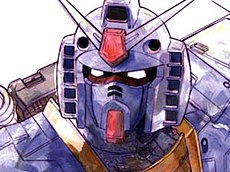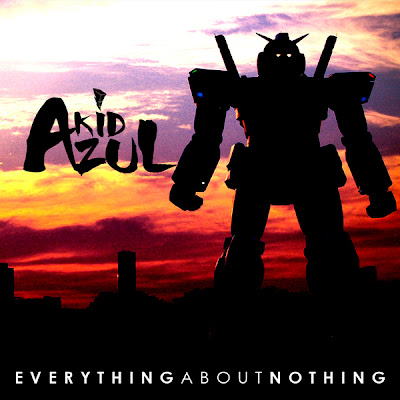This article is about the anime series. For the mecha themselves, see Mobile weapons.
The Gundam Series (ガンダムシリーズ Gandamu Shirīzu) is a metaseries of anime created by Sunrise studios that features giant robots (or "mecha") called "Mobile Suits" (MS); usually the protagonist's MS will carry the name Gundam.
The metaseries started on April 7, 1979, as a serial TV show called Mobile Suit Gundam. That first TV series has since spawned a franchise that has come to include works released in numerous media. Titles have appeared in the form of multiple television series andOVAs, movies, manga, novels and video games, among other modes. The story from the original 1979 series has been considerably extended with sequels, prequels, side stories and alternate timelines. As a result, the title Gundam has become a collective term for the seven distinct but related timelines that can be pieced together from the stories that appear in the Gundam franchise. Generally speaking, the timelines do not intersect, but they do contain a few common elements such as the titular war machines called Gundam. However, allGundam timelines and worlds, long after their own anime series, do eventually intersect and combine in the series Turn A Gundam.[1][2]
The original timeline for the Gundam series was the Universal Century (UC) series, which included Mobile Suit Gundam (1979) and Mobile Suit Zeta Gundam (1985). Since the 1990s, alternative timelines have been produced and developed, including the Future Century, After Colony, After War, Correct Century, Cosmic Era, Anno Domini and Advanced Generation timelines.
As of January 21, 2008, the Gundam franchise is a 50 billion yen trademark.[3] A year 2000 press release stated that retail sales of Gundam items had totaled $5 billion.[4] In the 2008 ranking of average sales figures for anime copies sold in Japan (1970-2008 total sales figures averaged by episode), Gundam series were in four of the top five places: Mobile Suit Gundam ranked second, with Mobile Suit Gundam SEED Destiny third, Mobile Suit Gundam SEED fourth, and Mobile Suit Zeta Gundam fifth. Also, Mobile Suit Gundam Wing ranked 18th and Mobile Suit Gundam ZZ ranked 20th.[5] Gunpla's (Gundam Plastic model) holds 90% of the Japan character plastic model market.[6]
Academics in Japan have also viewed the series as inspiration, with the International Gundam Society being the first academic institution based on an animated TV series.[7]
VIDEOS / MOTION GRAPHICS / ANIMATION -
The important aspect in all of these features is to recognise the scale of each model, wether it is in physical format or created in a three dimensional space. This allows the audience to fully understand what they are there for, a purpose. To protect.
--
7ft Paper craft model of a Gundam robot. This is absolutely incredible. Bringing to life a re-scaled piece of modelling into a whole new narrative. Creating a wider visual space between the audience and context. Expertly crafted and precision engineered, creating a thrilling atmosphere of intent.
ILLUSTRATIONS / PHOTOGRAPHS / SCREEN SHOTS -
A collection of different pieces of artwork used in different media to create Gundam robots. Wether it is based in 3D, physically drawn or vectorised Illustration. Photographs of existing pieces of physical design work could also be effective in influencing my design structure.
TOY GUNDAM -
The most impressive part to the design created, has to be the craftsmanship gone into building a three dimensional model base. As you can see there are stunning pieces of imagery, each creating a world of depth from view.
--
KID AZUL -
Interesting album artwork, featuring Gundam and Power Rangers. Obviously it relates to the artists interests or even style of music he has gone for. Again I like the use of context used to create this piece of work, as it demonstrates a visual understanding of how the audience would receive the album.











No comments:
Post a Comment